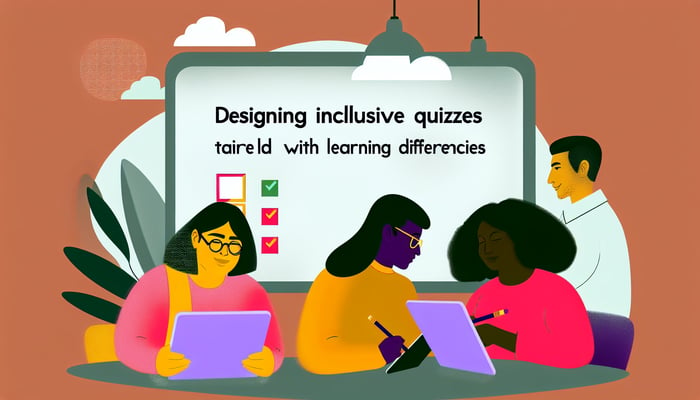Understanding Learning Differences
Learning differences encompass a range of conditions that affect how individuals process information. These can include dyslexia, ADHD, autism spectrum disorder, and more. Designing quizzes that are accessible to all learners, especially those with learning differences, can significantly enhance their educational experience.
Why Inclusive Quiz Design Matters
When quizzes are designed with inclusivity in mind, they not only evaluate knowledge but also foster a sense of belonging and engagement among all students. An inclusive approach acknowledges diverse learning needs and ensures that assessments are fair and effective.
Key Tips for Designing Inclusive Quizzes
Creating inclusive quizzes involves a thoughtful approach. Here are some practical tips to get you started:
1. Use Clear and Simple Language
- Opt for straightforward vocabulary and sentence structures.
- Avoid jargon or complex terms that may confuse learners.
2. Provide Visual Support
- Incorporate images, diagrams, and charts to complement text.
- Visual aids can help clarify questions and provide context.
3. Offer Different Question Formats
- Mix multiple choice, true/false, and short answer questions.
- Consider using matching exercises or fill-in-the-blank options.
4. Allow Extra Time
Provide extended time limits for quizzes. This accommodation can help reduce anxiety and allow students to demonstrate their knowledge without the pressure of a ticking clock.
5. Use Consistent Formatting
- Maintain consistency in fonts, colors, and layout throughout the quiz.
- Consistent formatting helps learners know what to expect and reduces cognitive load.
6. Include Clear Instructions
Provide explicit instructions on how to complete the quiz. Consider breaking down instructions into smaller, manageable steps and using bullet points for clarity.
7. Pilot Test Your Quiz
Before administering your quiz, conduct a pilot test with a diverse group of learners. Gather feedback on their experience and make necessary adjustments based on their responses.
Creating a Supportive Environment
In addition to the quiz design itself, fostering a supportive learning environment is crucial. Encourage open communication where students feel comfortable discussing their learning differences and seeking assistance when needed.
Conclusion
Designing inclusive quizzes for individuals with learning differences is essential for promoting equal opportunities in education. By implementing these practical tips, educators can create assessments that not only measure knowledge but also support all learners in their academic journey.



